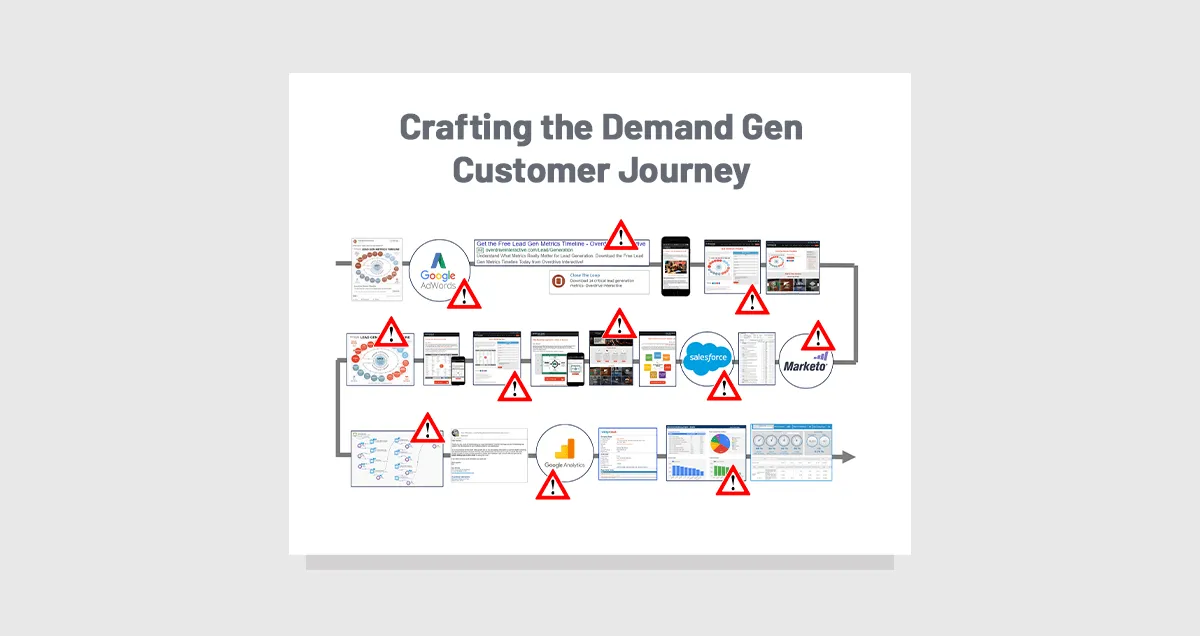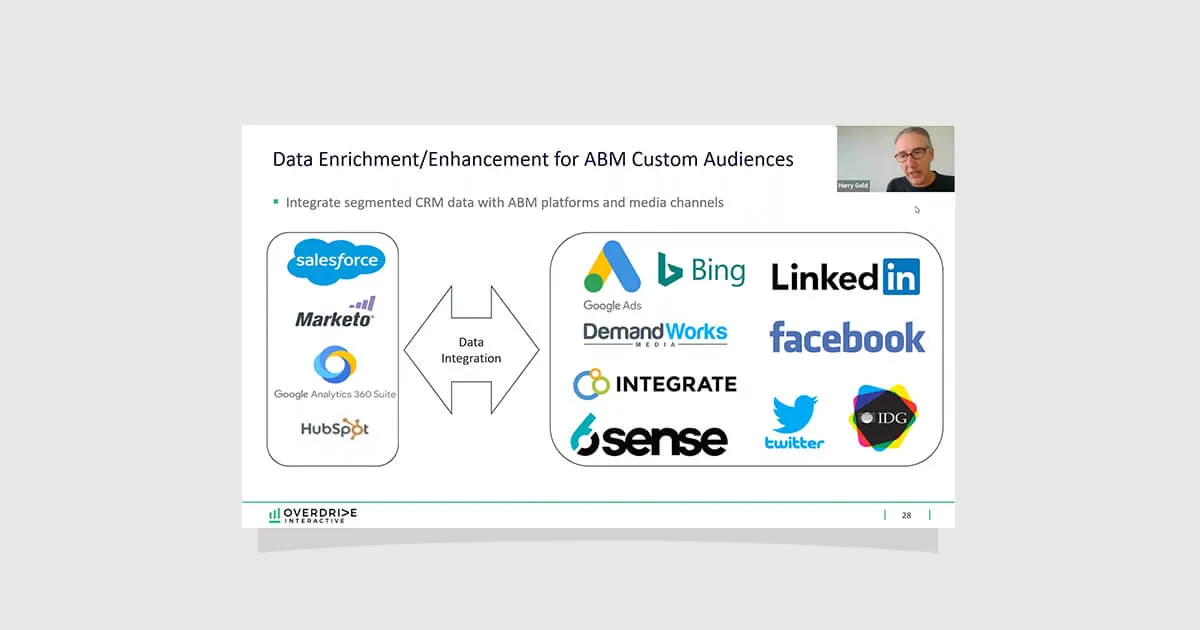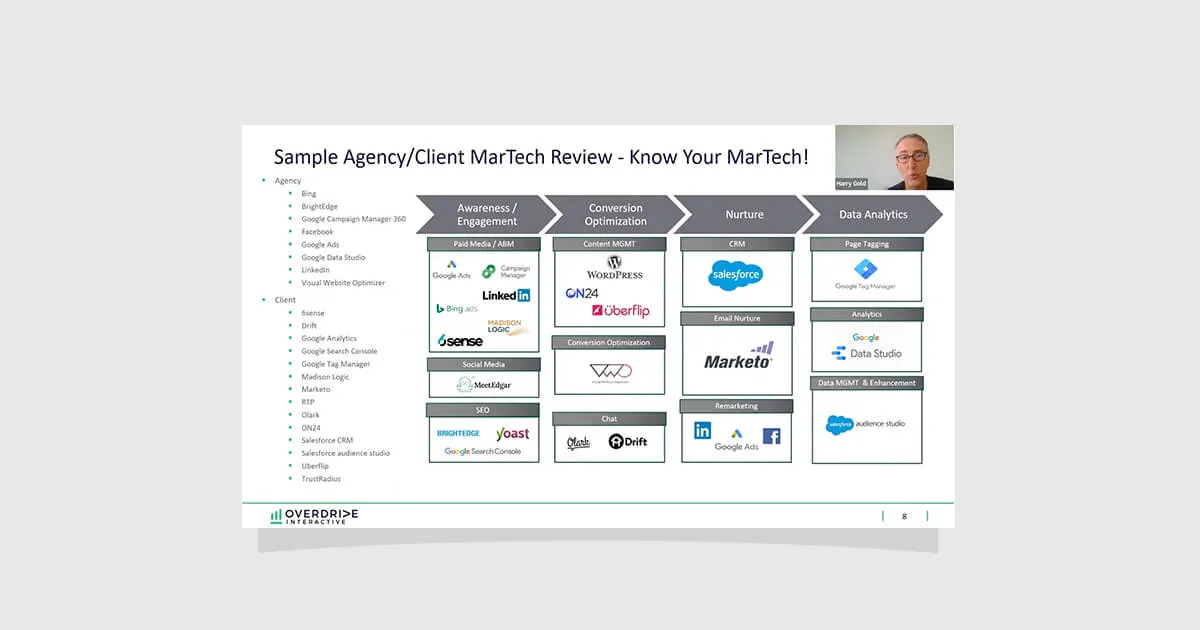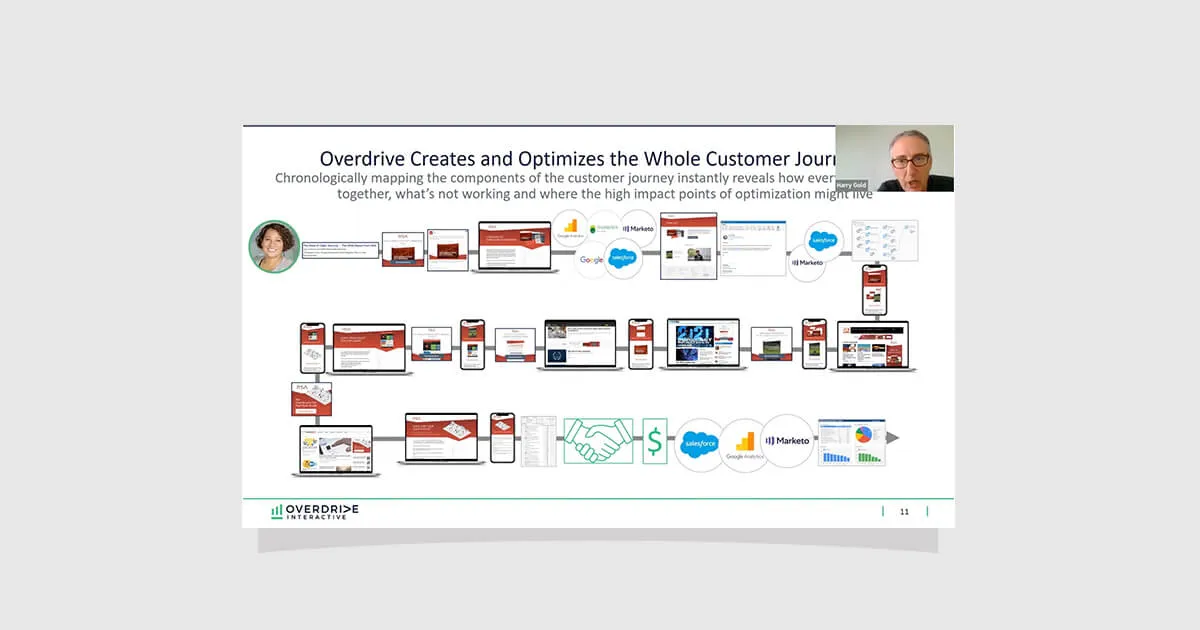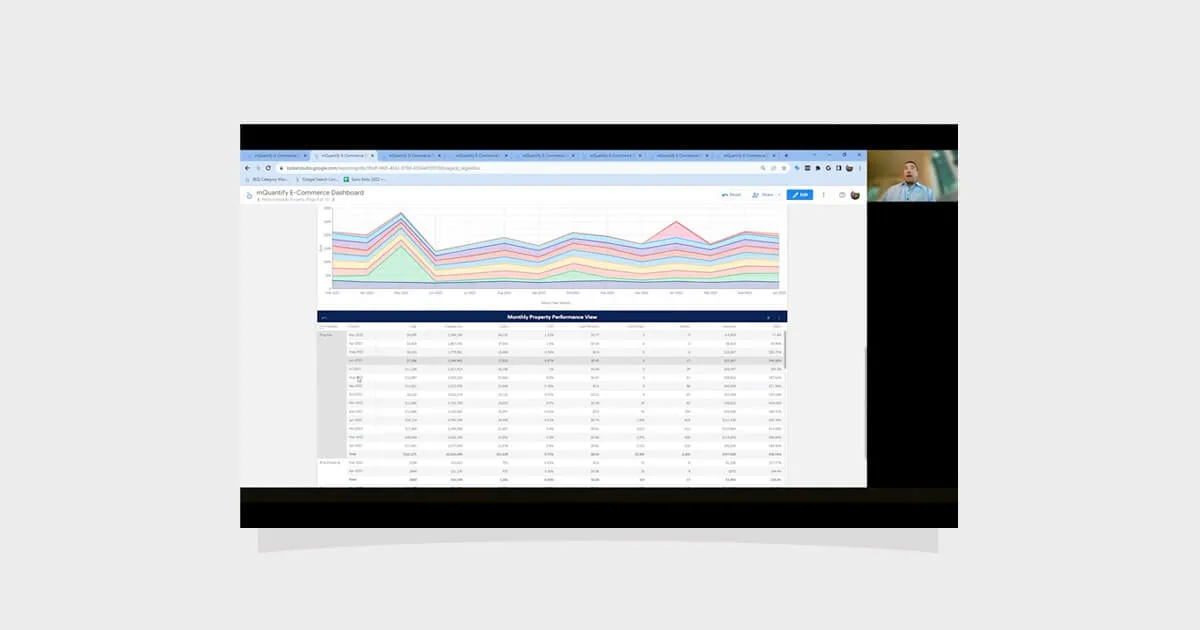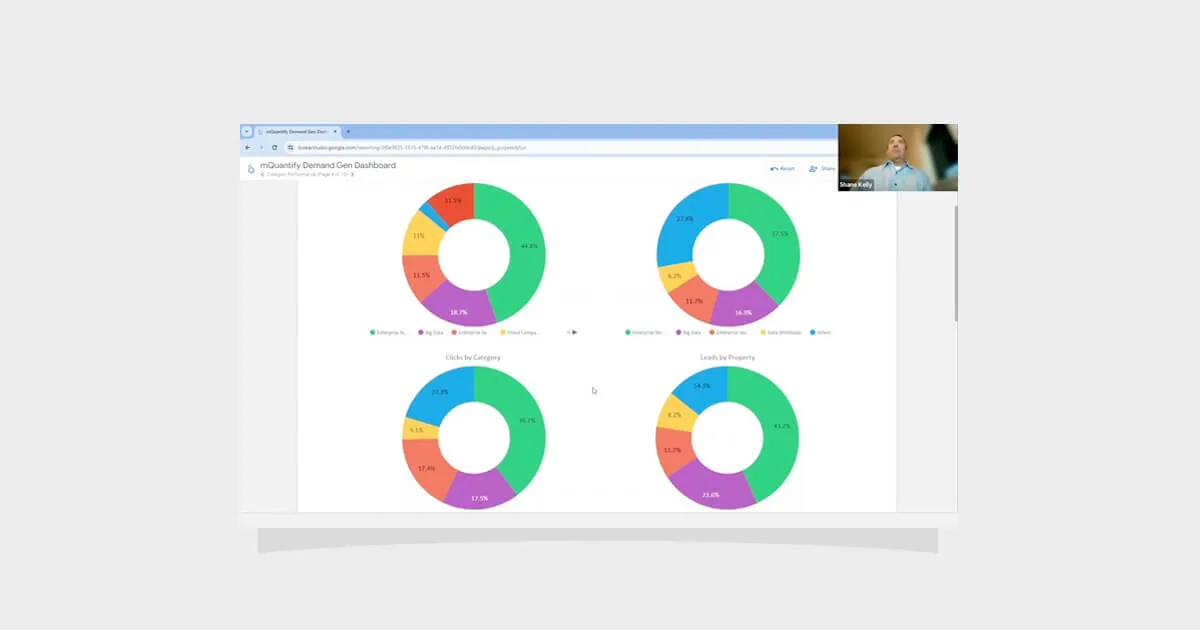From Data to Decisions: Defining Your Marketing Measurement & Visualization Strategy

Defining Your Marketing Measurement & Visualization Strategy
Part 2 of the “From Data to Decisions” series on building a modern marketing analytics engine.
In the previous post, we framed the need for a modern marketing intelligence engine—one that empowers marketers to move from reactive reporting to proactive, insight-driven decision-making.
Now, we begin building that engine. And like any complex system, it starts with a blueprint. But not one filled with tools, templates, or charts. A true analytics blueprint starts with business questions.
Objective-First Analytics: Start With Strategy, Not Software
Modern marketing analytics must be rooted in clear, aligned objectives. Too often, teams race to build dashboards without first agreeing on what success looks like, who the end users are, or what decisions the data should enable.
The result? Misaligned KPIs, inconsistent definitions, and flashy dashboards that fail to drive real business impact.
To avoid that, start here:
Ask the Right Questions First
- What are we trying to accomplish?
- What business questions must we answer?
- Who will use this data—and how?
- What decisions will it help them make?
Align Stakeholders Around Core Elements
- KPIs: What are the non-negotiable metrics that define performance?
- Attribution Models: Are we using last-click, data-driven, or multi-touch—and do all stakeholders understand the implications?
- Cadence: How often will data be refreshed, reviewed, and reported?
- Confidence Thresholds: What level of certainty is required to act on the insights?
Storyboard Before You Build
Before building a dashboard, sketch the story it needs to tell:
- What is the logical flow of information?
- What should users see first?
- How will each chart build upon the last?
- What comparisons, context, and annotations will help drive clarity?
Apply Strategic Frameworks to Organize Data
Leverage common marketing frameworks to give structure to your analysis:
- Funnel Framework: Awareness → Consideration → Conversion → Loyalty
- Customer Lifecycle: New vs. returning, churn risk, customer LTV
- Campaign Hierarchies: Channel → Campaign → Ad Group → Creative
- Engagement Paths: Session start → Navigation → Drop-offs → Action
Build a Metadata Map
Consistency and clarity across reporting hinges on a well-documented metadata strategy:
- Define metrics and dimensions in plain language
- Ensure consistency across tools and teams
- Prevent misinterpretation and conflicting definitions
- Make onboarding and handoffs faster and smoother
Final Thought
A strong measurement and visualization strategy is the scaffolding for your analytics engine. It ensures that when data starts flowing in, your team can interpret and act on it with purpose, consistency, and clarity.
Want Help Designing a Measurement Strategy That Drives Real Decisions?
At Overdrive Interactive, we help marketing teams go beyond the surface-level dashboard. Our Reporting & Analytics services focus on building measurement strategies that tie directly to business goals, align stakeholders, and drive action—not just observation.
Let’s design a system that delivers real performance clarity.
Explore our Reporting & Analytics offerings »
Next in the Series:
Building the Data Foundation — Pipelines, Warehousing & ETL
Once your strategy is in place, it’s time to build the plumbing. In the next post, we’ll dive into how to architect a data foundation that’s reliable, automated, and scalable—so your dashboards always run on clean, consistent, and trustworthy data.
From Data to Decisions: Defining Your Marketing Measurement & Visualization Strategy

Download the guide to:
Defining Your Marketing Measurement & Visualization Strategy
Part 2 of the “From Data to Decisions” series on building a modern marketing analytics engine.
In the previous post, we framed the need for a modern marketing intelligence engine—one that empowers marketers to move from reactive reporting to proactive, insight-driven decision-making.
Now, we begin building that engine. And like any complex system, it starts with a blueprint. But not one filled with tools, templates, or charts. A true analytics blueprint starts with business questions.
Objective-First Analytics: Start With Strategy, Not Software
Modern marketing analytics must be rooted in clear, aligned objectives. Too often, teams race to build dashboards without first agreeing on what success looks like, who the end users are, or what decisions the data should enable.
The result? Misaligned KPIs, inconsistent definitions, and flashy dashboards that fail to drive real business impact.
To avoid that, start here:
Ask the Right Questions First
- What are we trying to accomplish?
- What business questions must we answer?
- Who will use this data—and how?
- What decisions will it help them make?
Align Stakeholders Around Core Elements
- KPIs: What are the non-negotiable metrics that define performance?
- Attribution Models: Are we using last-click, data-driven, or multi-touch—and do all stakeholders understand the implications?
- Cadence: How often will data be refreshed, reviewed, and reported?
- Confidence Thresholds: What level of certainty is required to act on the insights?
Storyboard Before You Build
Before building a dashboard, sketch the story it needs to tell:
- What is the logical flow of information?
- What should users see first?
- How will each chart build upon the last?
- What comparisons, context, and annotations will help drive clarity?
Apply Strategic Frameworks to Organize Data
Leverage common marketing frameworks to give structure to your analysis:
- Funnel Framework: Awareness → Consideration → Conversion → Loyalty
- Customer Lifecycle: New vs. returning, churn risk, customer LTV
- Campaign Hierarchies: Channel → Campaign → Ad Group → Creative
- Engagement Paths: Session start → Navigation → Drop-offs → Action
Build a Metadata Map
Consistency and clarity across reporting hinges on a well-documented metadata strategy:
- Define metrics and dimensions in plain language
- Ensure consistency across tools and teams
- Prevent misinterpretation and conflicting definitions
- Make onboarding and handoffs faster and smoother
Final Thought
A strong measurement and visualization strategy is the scaffolding for your analytics engine. It ensures that when data starts flowing in, your team can interpret and act on it with purpose, consistency, and clarity.
Want Help Designing a Measurement Strategy That Drives Real Decisions?
At Overdrive Interactive, we help marketing teams go beyond the surface-level dashboard. Our Reporting & Analytics services focus on building measurement strategies that tie directly to business goals, align stakeholders, and drive action—not just observation.
Let’s design a system that delivers real performance clarity.
Explore our Reporting & Analytics offerings »
Next in the Series:
Building the Data Foundation — Pipelines, Warehousing & ETL
Once your strategy is in place, it’s time to build the plumbing. In the next post, we’ll dive into how to architect a data foundation that’s reliable, automated, and scalable—so your dashboards always run on clean, consistent, and trustworthy data.
From Data to Decisions: Defining Your Marketing Measurement & Visualization Strategy

Download the guide to:
Defining Your Marketing Measurement & Visualization Strategy
Part 2 of the “From Data to Decisions” series on building a modern marketing analytics engine.
In the previous post, we framed the need for a modern marketing intelligence engine—one that empowers marketers to move from reactive reporting to proactive, insight-driven decision-making.
Now, we begin building that engine. And like any complex system, it starts with a blueprint. But not one filled with tools, templates, or charts. A true analytics blueprint starts with business questions.
Objective-First Analytics: Start With Strategy, Not Software
Modern marketing analytics must be rooted in clear, aligned objectives. Too often, teams race to build dashboards without first agreeing on what success looks like, who the end users are, or what decisions the data should enable.
The result? Misaligned KPIs, inconsistent definitions, and flashy dashboards that fail to drive real business impact.
To avoid that, start here:
Ask the Right Questions First
- What are we trying to accomplish?
- What business questions must we answer?
- Who will use this data—and how?
- What decisions will it help them make?
Align Stakeholders Around Core Elements
- KPIs: What are the non-negotiable metrics that define performance?
- Attribution Models: Are we using last-click, data-driven, or multi-touch—and do all stakeholders understand the implications?
- Cadence: How often will data be refreshed, reviewed, and reported?
- Confidence Thresholds: What level of certainty is required to act on the insights?
Storyboard Before You Build
Before building a dashboard, sketch the story it needs to tell:
- What is the logical flow of information?
- What should users see first?
- How will each chart build upon the last?
- What comparisons, context, and annotations will help drive clarity?
Apply Strategic Frameworks to Organize Data
Leverage common marketing frameworks to give structure to your analysis:
- Funnel Framework: Awareness → Consideration → Conversion → Loyalty
- Customer Lifecycle: New vs. returning, churn risk, customer LTV
- Campaign Hierarchies: Channel → Campaign → Ad Group → Creative
- Engagement Paths: Session start → Navigation → Drop-offs → Action
Build a Metadata Map
Consistency and clarity across reporting hinges on a well-documented metadata strategy:
- Define metrics and dimensions in plain language
- Ensure consistency across tools and teams
- Prevent misinterpretation and conflicting definitions
- Make onboarding and handoffs faster and smoother
Final Thought
A strong measurement and visualization strategy is the scaffolding for your analytics engine. It ensures that when data starts flowing in, your team can interpret and act on it with purpose, consistency, and clarity.
Want Help Designing a Measurement Strategy That Drives Real Decisions?
At Overdrive Interactive, we help marketing teams go beyond the surface-level dashboard. Our Reporting & Analytics services focus on building measurement strategies that tie directly to business goals, align stakeholders, and drive action—not just observation.
Let’s design a system that delivers real performance clarity.
Explore our Reporting & Analytics offerings »
Next in the Series:
Building the Data Foundation — Pipelines, Warehousing & ETL
Once your strategy is in place, it’s time to build the plumbing. In the next post, we’ll dive into how to architect a data foundation that’s reliable, automated, and scalable—so your dashboards always run on clean, consistent, and trustworthy data.
From Data to Decisions: Defining Your Marketing Measurement & Visualization Strategy

Key Insights From Our Research
Defining Your Marketing Measurement & Visualization Strategy
Part 2 of the “From Data to Decisions” series on building a modern marketing analytics engine.
In the previous post, we framed the need for a modern marketing intelligence engine—one that empowers marketers to move from reactive reporting to proactive, insight-driven decision-making.
Now, we begin building that engine. And like any complex system, it starts with a blueprint. But not one filled with tools, templates, or charts. A true analytics blueprint starts with business questions.
Objective-First Analytics: Start With Strategy, Not Software
Modern marketing analytics must be rooted in clear, aligned objectives. Too often, teams race to build dashboards without first agreeing on what success looks like, who the end users are, or what decisions the data should enable.
The result? Misaligned KPIs, inconsistent definitions, and flashy dashboards that fail to drive real business impact.
To avoid that, start here:
Ask the Right Questions First
- What are we trying to accomplish?
- What business questions must we answer?
- Who will use this data—and how?
- What decisions will it help them make?
Align Stakeholders Around Core Elements
- KPIs: What are the non-negotiable metrics that define performance?
- Attribution Models: Are we using last-click, data-driven, or multi-touch—and do all stakeholders understand the implications?
- Cadence: How often will data be refreshed, reviewed, and reported?
- Confidence Thresholds: What level of certainty is required to act on the insights?
Storyboard Before You Build
Before building a dashboard, sketch the story it needs to tell:
- What is the logical flow of information?
- What should users see first?
- How will each chart build upon the last?
- What comparisons, context, and annotations will help drive clarity?
Apply Strategic Frameworks to Organize Data
Leverage common marketing frameworks to give structure to your analysis:
- Funnel Framework: Awareness → Consideration → Conversion → Loyalty
- Customer Lifecycle: New vs. returning, churn risk, customer LTV
- Campaign Hierarchies: Channel → Campaign → Ad Group → Creative
- Engagement Paths: Session start → Navigation → Drop-offs → Action
Build a Metadata Map
Consistency and clarity across reporting hinges on a well-documented metadata strategy:
- Define metrics and dimensions in plain language
- Ensure consistency across tools and teams
- Prevent misinterpretation and conflicting definitions
- Make onboarding and handoffs faster and smoother
Final Thought
A strong measurement and visualization strategy is the scaffolding for your analytics engine. It ensures that when data starts flowing in, your team can interpret and act on it with purpose, consistency, and clarity.
Want Help Designing a Measurement Strategy That Drives Real Decisions?
At Overdrive Interactive, we help marketing teams go beyond the surface-level dashboard. Our Reporting & Analytics services focus on building measurement strategies that tie directly to business goals, align stakeholders, and drive action—not just observation.
Let’s design a system that delivers real performance clarity.
Explore our Reporting & Analytics offerings »
Next in the Series:
Building the Data Foundation — Pipelines, Warehousing & ETL
Once your strategy is in place, it’s time to build the plumbing. In the next post, we’ll dive into how to architect a data foundation that’s reliable, automated, and scalable—so your dashboards always run on clean, consistent, and trustworthy data.
From Data to Decisions: Defining Your Marketing Measurement & Visualization Strategy
Get the Complete Whitepaper
From Data to Decisions: Defining Your Marketing Measurement & Visualization Strategy
Defining Your Marketing Measurement & Visualization Strategy
Part 2 of the “From Data to Decisions” series on building a modern marketing analytics engine.
In the previous post, we framed the need for a modern marketing intelligence engine—one that empowers marketers to move from reactive reporting to proactive, insight-driven decision-making.
Now, we begin building that engine. And like any complex system, it starts with a blueprint. But not one filled with tools, templates, or charts. A true analytics blueprint starts with business questions.
Objective-First Analytics: Start With Strategy, Not Software
Modern marketing analytics must be rooted in clear, aligned objectives. Too often, teams race to build dashboards without first agreeing on what success looks like, who the end users are, or what decisions the data should enable.
The result? Misaligned KPIs, inconsistent definitions, and flashy dashboards that fail to drive real business impact.
To avoid that, start here:
Ask the Right Questions First
- What are we trying to accomplish?
- What business questions must we answer?
- Who will use this data—and how?
- What decisions will it help them make?
Align Stakeholders Around Core Elements
- KPIs: What are the non-negotiable metrics that define performance?
- Attribution Models: Are we using last-click, data-driven, or multi-touch—and do all stakeholders understand the implications?
- Cadence: How often will data be refreshed, reviewed, and reported?
- Confidence Thresholds: What level of certainty is required to act on the insights?
Storyboard Before You Build
Before building a dashboard, sketch the story it needs to tell:
- What is the logical flow of information?
- What should users see first?
- How will each chart build upon the last?
- What comparisons, context, and annotations will help drive clarity?
Apply Strategic Frameworks to Organize Data
Leverage common marketing frameworks to give structure to your analysis:
- Funnel Framework: Awareness → Consideration → Conversion → Loyalty
- Customer Lifecycle: New vs. returning, churn risk, customer LTV
- Campaign Hierarchies: Channel → Campaign → Ad Group → Creative
- Engagement Paths: Session start → Navigation → Drop-offs → Action
Build a Metadata Map
Consistency and clarity across reporting hinges on a well-documented metadata strategy:
- Define metrics and dimensions in plain language
- Ensure consistency across tools and teams
- Prevent misinterpretation and conflicting definitions
- Make onboarding and handoffs faster and smoother
Final Thought
A strong measurement and visualization strategy is the scaffolding for your analytics engine. It ensures that when data starts flowing in, your team can interpret and act on it with purpose, consistency, and clarity.
Want Help Designing a Measurement Strategy That Drives Real Decisions?
At Overdrive Interactive, we help marketing teams go beyond the surface-level dashboard. Our Reporting & Analytics services focus on building measurement strategies that tie directly to business goals, align stakeholders, and drive action—not just observation.
Let’s design a system that delivers real performance clarity.
Explore our Reporting & Analytics offerings »
Next in the Series:
Building the Data Foundation — Pipelines, Warehousing & ETL
Once your strategy is in place, it’s time to build the plumbing. In the next post, we’ll dive into how to architect a data foundation that’s reliable, automated, and scalable—so your dashboards always run on clean, consistent, and trustworthy data.

From Data to Decisions: Defining Your Marketing Measurement & Visualization Strategy
Get the Slides
From Data to Decisions: Defining Your Marketing Measurement & Visualization Strategy
Defining Your Marketing Measurement & Visualization Strategy
Part 2 of the “From Data to Decisions” series on building a modern marketing analytics engine.
In the previous post, we framed the need for a modern marketing intelligence engine—one that empowers marketers to move from reactive reporting to proactive, insight-driven decision-making.
Now, we begin building that engine. And like any complex system, it starts with a blueprint. But not one filled with tools, templates, or charts. A true analytics blueprint starts with business questions.
Objective-First Analytics: Start With Strategy, Not Software
Modern marketing analytics must be rooted in clear, aligned objectives. Too often, teams race to build dashboards without first agreeing on what success looks like, who the end users are, or what decisions the data should enable.
The result? Misaligned KPIs, inconsistent definitions, and flashy dashboards that fail to drive real business impact.
To avoid that, start here:
Ask the Right Questions First
- What are we trying to accomplish?
- What business questions must we answer?
- Who will use this data—and how?
- What decisions will it help them make?
Align Stakeholders Around Core Elements
- KPIs: What are the non-negotiable metrics that define performance?
- Attribution Models: Are we using last-click, data-driven, or multi-touch—and do all stakeholders understand the implications?
- Cadence: How often will data be refreshed, reviewed, and reported?
- Confidence Thresholds: What level of certainty is required to act on the insights?
Storyboard Before You Build
Before building a dashboard, sketch the story it needs to tell:
- What is the logical flow of information?
- What should users see first?
- How will each chart build upon the last?
- What comparisons, context, and annotations will help drive clarity?
Apply Strategic Frameworks to Organize Data
Leverage common marketing frameworks to give structure to your analysis:
- Funnel Framework: Awareness → Consideration → Conversion → Loyalty
- Customer Lifecycle: New vs. returning, churn risk, customer LTV
- Campaign Hierarchies: Channel → Campaign → Ad Group → Creative
- Engagement Paths: Session start → Navigation → Drop-offs → Action
Build a Metadata Map
Consistency and clarity across reporting hinges on a well-documented metadata strategy:
- Define metrics and dimensions in plain language
- Ensure consistency across tools and teams
- Prevent misinterpretation and conflicting definitions
- Make onboarding and handoffs faster and smoother
Final Thought
A strong measurement and visualization strategy is the scaffolding for your analytics engine. It ensures that when data starts flowing in, your team can interpret and act on it with purpose, consistency, and clarity.
Want Help Designing a Measurement Strategy That Drives Real Decisions?
At Overdrive Interactive, we help marketing teams go beyond the surface-level dashboard. Our Reporting & Analytics services focus on building measurement strategies that tie directly to business goals, align stakeholders, and drive action—not just observation.
Let’s design a system that delivers real performance clarity.
Explore our Reporting & Analytics offerings »
Next in the Series:
Building the Data Foundation — Pipelines, Warehousing & ETL
Once your strategy is in place, it’s time to build the plumbing. In the next post, we’ll dive into how to architect a data foundation that’s reliable, automated, and scalable—so your dashboards always run on clean, consistent, and trustworthy data.

From Data to Decisions: Defining Your Marketing Measurement & Visualization Strategy






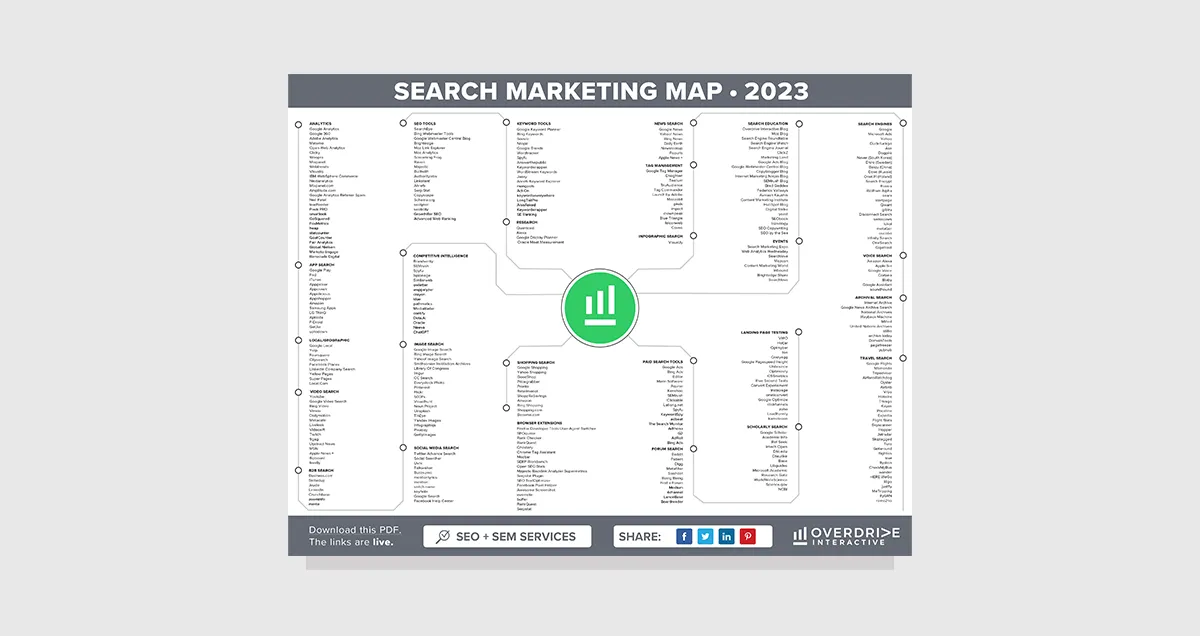
.webp)


